Last updated: 15 July 2023
2022 Update
We are deeply saddened by what is happening across Ukraine at the moment and our hearts go out to everyone whom has been affected by this ongoing tragedy. Obviously, travel to Ukraine is not an option so please consult your local Government website for guidance and official charities on how to best donate.
This post was written in early 2017 following our visit in late 2016, we hope our Ukraine posts continue to provide some historical context about what travel to Ukraine was once like.
This is the second post in a three part series covering our visit to the Chernobyl Exclusion Zone in Ukraine. The first post explained the reasons why we decided to visit Chernobyl, what it was like to explore the various sites, such as the Duga radar station and understanding how radiation exposure is measured. This post will focus on exploring the abandoned city of Pripyat.
Day Two inside the Chernobyl Exclusion Zone
Our second day of exploring the Chernobyl Exclusion Zone was dedicated to the abandoned city of Pripyat, once the most prestigious city in the Soviet Union. Today, the crumbling city is slowly being consumed by nature and will, on a long enough timeline, eventually be consumed by nature.
The decision by our tour guide to spend our second day at Pripyat was based on a couple of factors. The first was due to the number of other tour groups visiting on Day 1 which meant that the main locations would be very busy likely impact the overall experience. The second was that an early morning visit to Pripyat would minimise the chance of running into guards who would prevent us from entering the buildings.
Is it illegal to visit Pripyat?
No, it’s not illegal to visit Pripyat and you can visit with your tour without issues. However, from 2012 it’s been forbidden to enter the buildings due to safety concerns which is why an increased guard presence may occur with larger groups visiting at the same time.
I asked our guide what would happen if we entered a building and were stopped by guards. She replied that even though it’s never happened to her personally, she did know of another guide who was asked to vacate the abandoned building with their group and face consequences from their employer.
The decision to visit early on Day 2 turned out to be a good decision because we saw no one else for the entire day. It was just our small group exploring an abandoned city that once inhabited 43,000 people.
The History
The custom-built city of Pripyat was constructed in 1970 for the sole purpose of housing the Chernobyl Nuclear Power Plant workers and their young families. For 16 years, from 1970 to 1986, it was the most expensive city in the entire Soviet Union, indicating the importance of the newly constructed nuclear power plant (which was originally called the V.I Lenin Nuclear Power Plant during Soviet times).
Pripyat was once considered a prestigious place to live because it was brand new with all the modern conveniences a young family could want and it was conveniently located a mere 3km from the nuclear power plant. The modern city was representative of the importance placed upon those who worked at the power plant.
In the early hours of April 26th 1986, the Chernobyl Nuclear Power Plant’s Reactor No 4 overheated and exploded resulting in enormous quantities of radioactive material being released into the atmosphere impacting not only the immediate area but, over the course of a week, the majority of Europe.
The close proximity of Pripyat meant that the town was immediately exposed to high levels of radiation but residents weren’t made aware of this. They were aware that something had taken place but did not know the specifics. In fact, life continued as normal for the next 48 hours while investigations were taken place. In something that you would expect see in a horror film, images exist of government officials wearing radiation suits taking exposure levels in the middle of Pripyat whilst residents walk casually through the streets wearing their normal clothes. It was heartbreaking to learn this.
The 43,000 residents were eventually evacuated by bus two days after the initial explosion. They were informed it was only a temporary measure and that they would return in a few days. This was the last time they would ever see their homes. It felt incredibly sad hearing about what the residents endured in the aftermath of the explosion and the lies they were told by their government.
Exploring Pripyat
Abandoned Apartment Building
As we approached the town of Pripyat, we passed through another security checkpoint, and then made our way through the empty streets until we arrived at our first stop, a large 16 storey apartment complex.
We were advised to put on our white protective masks before entering the building. This wasn’t to protect us from radiation exposure (it was something that we did wonder about…) but rather to protect us from inhaling dust and any potential asbestos. I hadn’t even thought about the possibility of asbestos but it made sense, the buildings were created in 1970 when the use of asbestos was at its height.
We secured the masks and headed inside the abandoned building and headed to the exposed stairwell and started our ascent to the top. We took care not to slip on the loose rubble and shards of glass from broken windows. As we passed by empty floor after empty floor, it became a little haunting to look at the crumbling remains of what once was a brand new apartment building.
I don’t think either of us realised just how many stairs were involved in climbing to the top of a 16 storey apartment building! It just seemed to go on and on and on… We passed by the open elevator shaft and took a quick look inside.
We arrived at the 16th floor and climbed up a small ladder to the open rooftop. Once our legs stopped burning and the air had returned to our lungs, we looked around and were left speechless by the sheer size of Pripyat, it was enormous.
I couldn’t believe how large Pripyat was, it was so much bigger than I ever thought it would be. I guess it made sense, the city once had a population of 43,000 people and they all had to live somewhere. There were dozens of buildings, some apartments and some offices, but all were still standing, a stark reminder of the life that once existed there.
We walked to one side of the rooftop and could see in the distance over the treetops, the Pripyat amusement park. The yellow-topped ferris wheel carriages have become an instantly recognisable symbol of the Chernobyl disaster.
On the other side, we could see the silhouette of the new sarcophagus being fitted into place over the destroyed reactor no 4. The new safe confinement was being completed on the weekend during our visit so this was as close as we were going to get on this trip.
However, there was something to be said about viewing it from the top of an abandoned building in the centre of Pripyat.
Fitness Centre
Our next stop was the abandoned fitness centre which remained in operation until 1998, 12 years after the explosion. The swimming pool and equipment continued to be used by the workers of the nuclear plant, reactors no 1, 2, and 3 continued to operate until the entire plant was completely closed in 2000.
Photographer Traps: The clock at the swimming pool has been set to display 1:23 (manually set), the time of the explosion. However, the swimming pool remained in use in the years following the disaster, it was interesting to learn that the state of the fitness centre wasn’t as a result of the explosion but rather from years of neglect and looting.
Pripyat School
One of the most photographed places in all of Pripyat and it doesn’t take long to see why; the decaying walls, disused school desks covered in dust, hundreds of textbooks strewn across the halls, and broken science equipment all serve as a reminder of the loss of innocence and education.
However…
Photography Traps: During your visit to Pripyat, you will see many photo spots which have been clearly staged for visitors. Some of them include;
- A pile of gas masks surrounding a child’s doll placed on a chair
- The broken TV frame which served as a frame to a doll
- The open school books surrounded by parts of a gas mask
- A gas mask hanging near an open window
- A disused globe positioned with a gas mask in the background
Now, there’s nothing wrong with taking these photos but just don’t be fooled into thinking that the rooms were left in those positions.
Pripyat Hospital
Our next stop was the hospital which remains one of the most highly contaminated places in Pripyat due to being the location where the brave firefighters were brought for treatment following their attempts to extinguish the nuclear fire.
We were advised that the radiation levels today were not anywhere near the levels they were 30 years ago due radioactive particles being heavy and absorbed into the ground and also that Pripyat was cleaned by the liquidators following the explosion (which is how certain parts of Pripyat remained in use in the years following the disaster). As the hospital had higher radiation levels than most other sites we visited we had a timeframe of 25 min before we would need to leave. It felt absolutely haunting to be walking through the hospital, and trying to comprehend what had happened here.
This was probably one of the saddest places we visited because of its connection with the brave individuals who sacrificed their lives trying to protect others.
Cafe & River
Our next stop was along the banks of the Pripyat River where we visited the remains of a small family cafe which was opened a mere two months before the explosion.
As we stood on the edge of the Pripyat River, our guide informed us that the river had been tested and confirmed as clean.
Apparently the river is clean enough that fish live in there now which is just incredible. We were told of the thriving wildlife which exists inside the Exclusion Zone. Our guide informed is that the reason the river received a clean test is that radioactive particles are very heavy and soak into the soil beneath the water.
Main Square & Hotel Polissya
We spent some time walking through the town centre and arrived at the main square. It was here, surrounded by a collection of former government buildings, that we were informed of the history of Chernobyl and the events of what would become known as the worst nuclear disaster in history. Details of the history of Chernobyl can be found here.
Once we entered Hotel Polissya, we took the stairs and headed towards the roof to capture photos of Pripyat town centre.
It was also the final place we’d visit where we could capture one last look at the new safe confinement being put in place over the old sarcophagus.
Palace of Culture
The next stop on our walk through the town centre was the former Palace of Culture which was the location for the Chernobyl disaster trial.
Six individuals were tried and subsequently sentenced for various crimes associated with their handling of the Chernobyl disaster.
Pripyat Amusement Park
As we moved away from the town centre, we arrived at the most well known area of the Chernobyl Exclusion Zone; the abandoned amusement park.
If you’ve ever Googled Chernobyl then you would have seen many images of the decaying ferris wheel and dodgem cars from a variety of angles in all seasons. The amusement park has become a symbol of the Chernobyl disaster and it felt a little surreal to see it in person.
The story of the amusement park is an interesting one because it was planned to open on May 1st 1986, in time for May Day celebrations but due to the explosion 5 days earlier, it was never opened to the public. However, there are claims (which are unsubstantiated) that the park did open for a few hours on April 27th but this has never been confirmed.
We learned that the amusement park is considered a radioactive hot spot because it was where the helicopters that dropped sand and boric acid on reactor no 4 were washed and cleaned. The geiger counters we had on us detected higher levels of radiation compared to other locations we visited.
This is not a place where we could stay for too long due to the radiation levels so we spent a few minutes here before leaving.
Avanhard Stadium
A former stadium, home to the Stroitel Pripyat football club, located near the amusement park was our next stop and it was quite a sight to behold. The first thing that I noticed was the seating, it was typical football seating which you can see in most stadiums around the world. However, whilst I could see the seating, trying to find the football pitch was a little more difficult until I realised that the wooded forest we walked through WAS the pitch!
It was at this point that we decided to take a break for lunch so we piled back into the van and drove back to our hotel for a warm meal and we welcomed the chance to defrost for awhile.
Police Station
Following lunch, our next stop was the former police station which continued in operation for five years after the explosion. It was interesting to learn that following the explosion, the police officers who continued to work in Pripyat didn’t come from the local area but were brought in from outside areas.
It was said that their focus and attention wasn’t at the same levels as their predecessors and it was during this time that the majority of looting took place in Pripyat, which contributed to the current state of decay.
Car Graveyard
One of the more unusual sights during the tour was visiting the car graveyard. These were cars which once belonged to residents who were forced to leave them during the mass evacuations from town.
Whilst there are many cars, trucks, military, and rescue vehicles, the graveyard used to be larger but has since shrunk over time due to ongoing looting and theft.
We were shown a large mechanical scoop, located at the end of the car graveyard, near the fire station.
This scoop was used during firefighting efforts to move radioactive materials from reactor no 4. Despite being cleaned by the liquidators, it is still contaminated. The geiger counters detected between 40-50 micro sieverts, higher than most places we visited. The scoop should have been disassembled and buried but for whatever reason it has remained in the open in the middle of the forest
Jupiter Factory
Next on our tour was a short visit to the Jupiter Factory, the second main employer after the nuclear plant. The factory specialised in the creation of radio antennas and electrical components for home appliances. The factory remained in operation following the explosion and finally closed in 1996. Whilst we didn’t stay long, it was really impressive to see the sheer size and scale of the factory, it was huge!
On a side note, rumours persist that the Jupiter factory secretly created military semiconductor components. This wasn’t explained in detail during our tour but it did give us pause to ponder the possibility.
Yaniv Train Station
The Yaniv train station, also referred to as Pripyat train station, was created in 1925. Following the explosion the station was closed for the most part however some sections remained operational and used to transport staff to and from Chernobyl. Most recently, the train line was used for the transportation of new safe confinement parts.
Robot Memorial
As our day of exploring Pripyat drew to a close, we made a short stop at the robot memorial. We disembarked the van to find a series of machines on display behind a barrier with various radioactive warning signs on them.
These were the machines used during the radioactive clean up following the explosion. We stayed long enough to take a few photos but the sounds of the geiger counters indicated that it was time to go.
Firefighters Monument
Our final stop was at the Firefighters Memorial, a poignant and moving monument dedicated to the bravery of those who responded within 3 min to the explosion without any regard to their own safety. These were the people who rushed into disaster to protect the city and its people without knowing what they facing. It was heartbreaking to learn of their sacrifice and we felt humbled to be able to stand in front of the memorial and reflect on everything we had learned during our time in Pripyat.
Writing in monument says FOR THOSE WHO SAVE THE WORLD.
Final Thoughts
Spending two days exploring the Chernobyl Exclusion Zone was haunting, poignant, and unlike any other experience we’ve ever had. It is something that we will never forget. I can understand that a visit to the Chernobyl Exclusion Zone may not be for everyone, it does provide the opportunity to learn about the worst nuclear disaster in history, its impact on the people who lived here, and the world at large. Something we should never forget and continue to learn from.
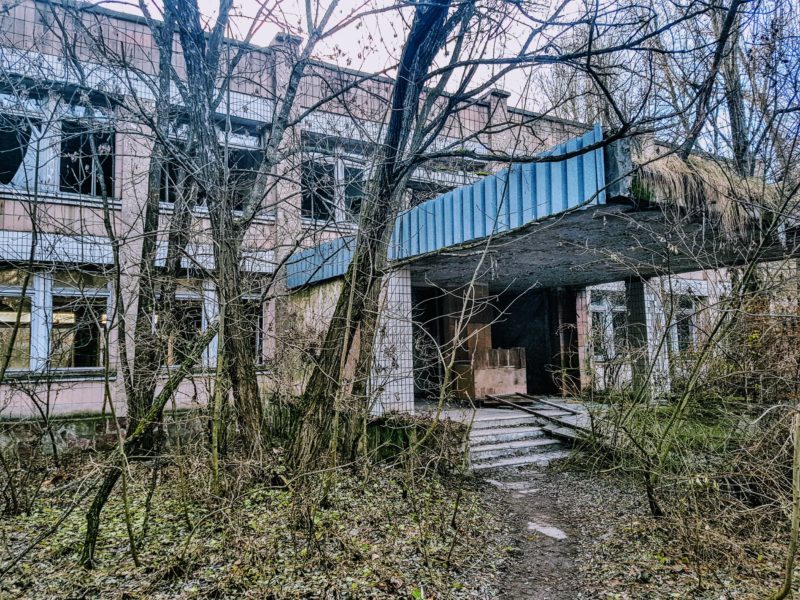
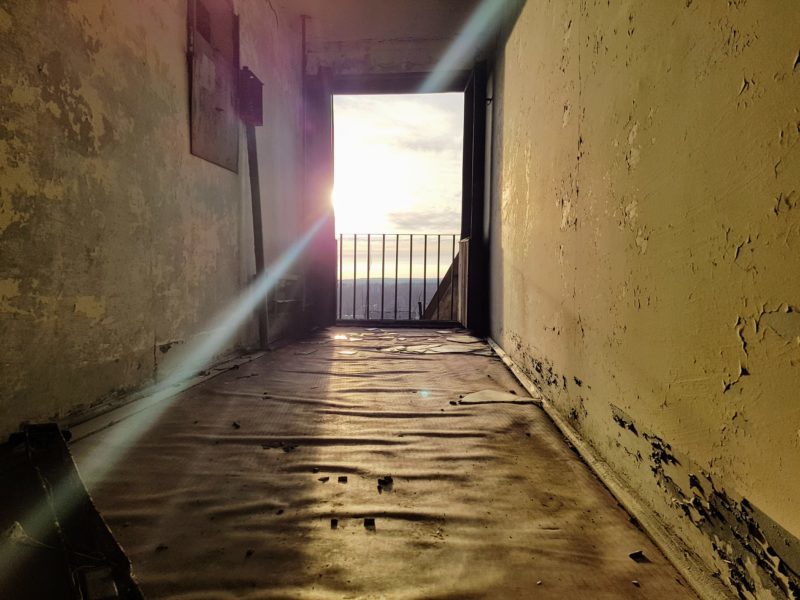
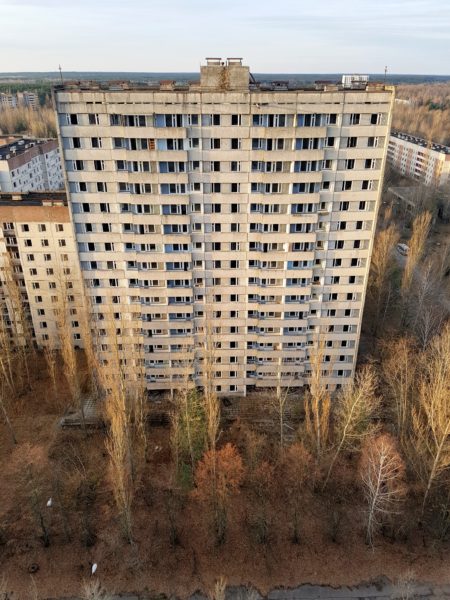
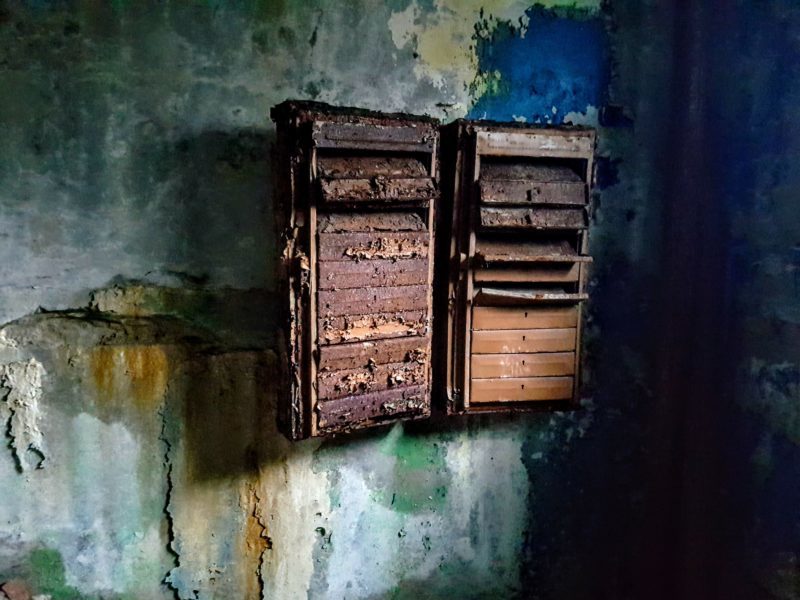
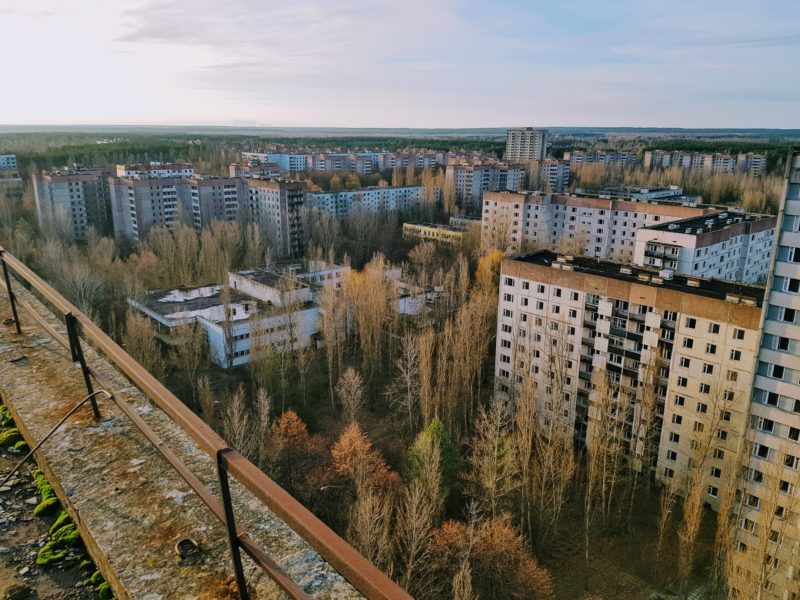
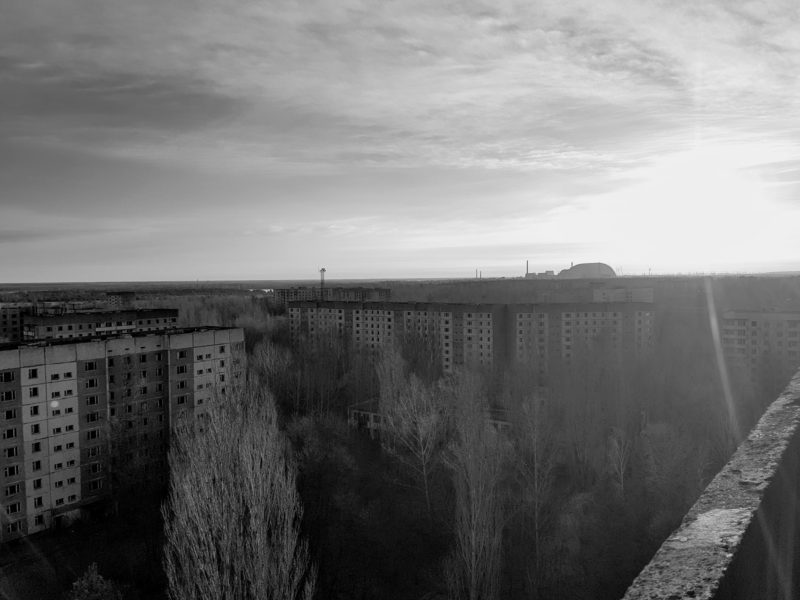
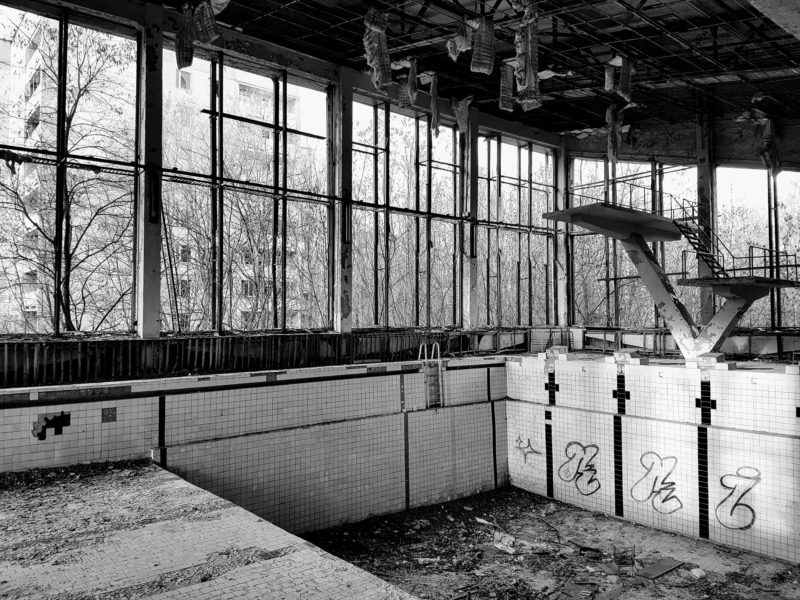
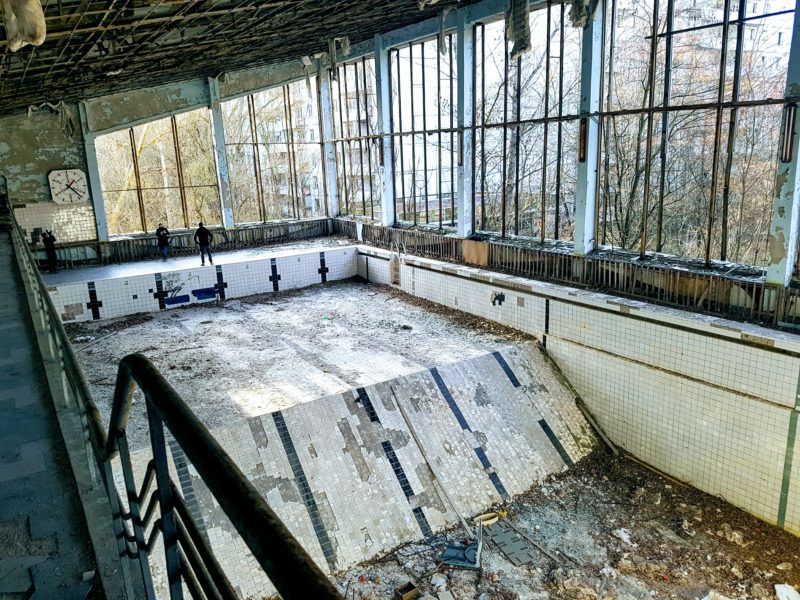
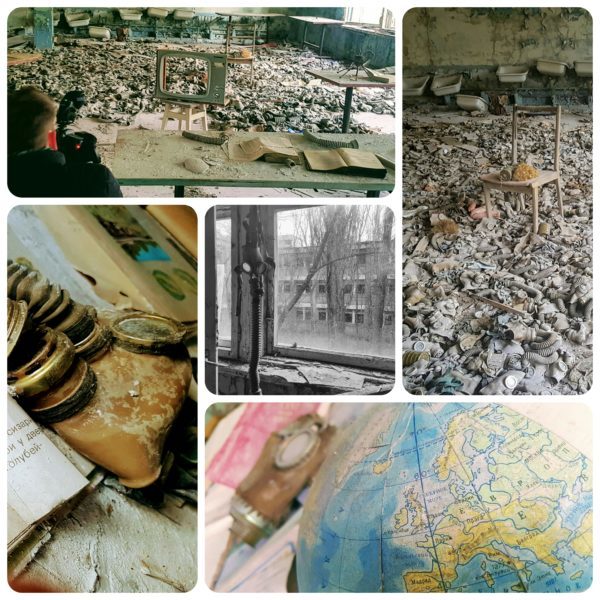
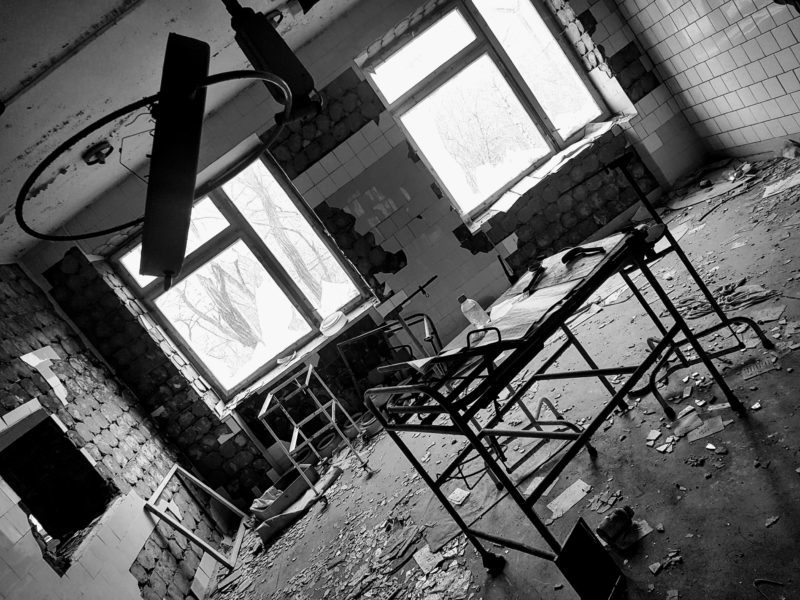
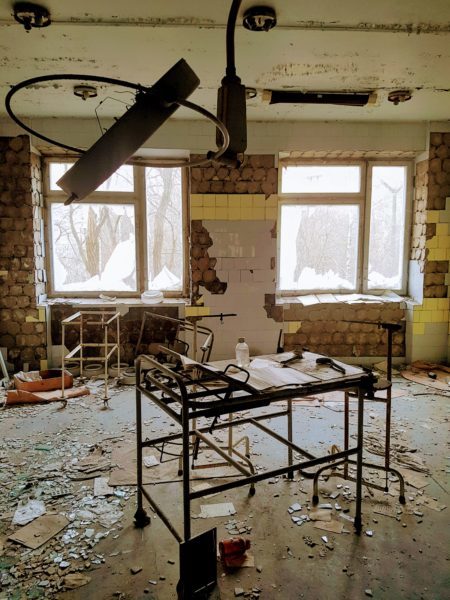
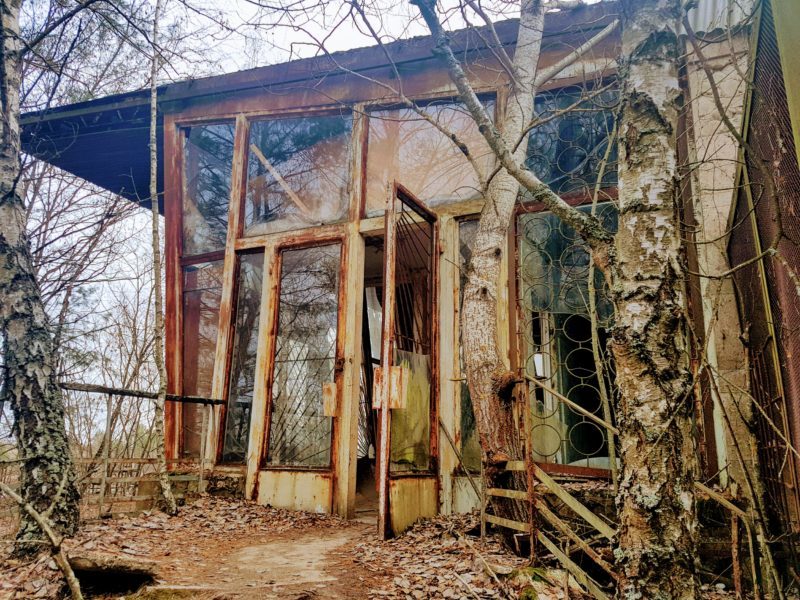
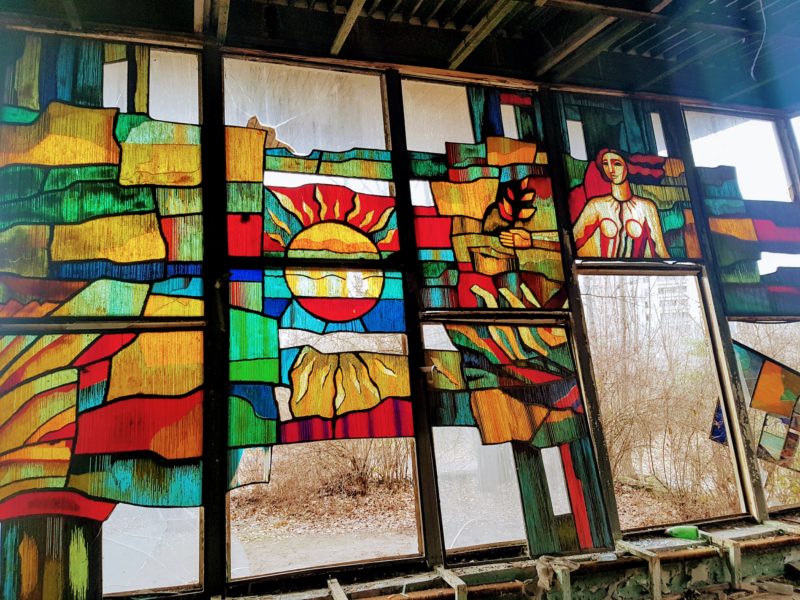
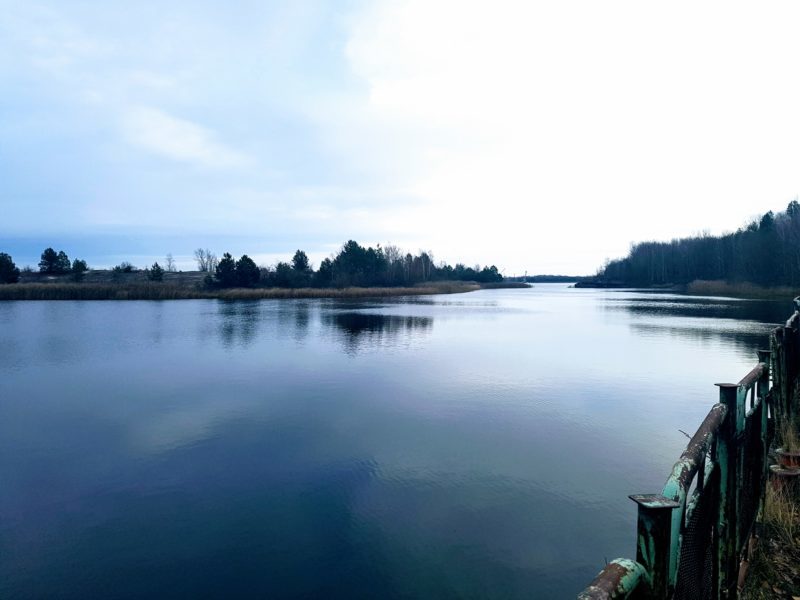
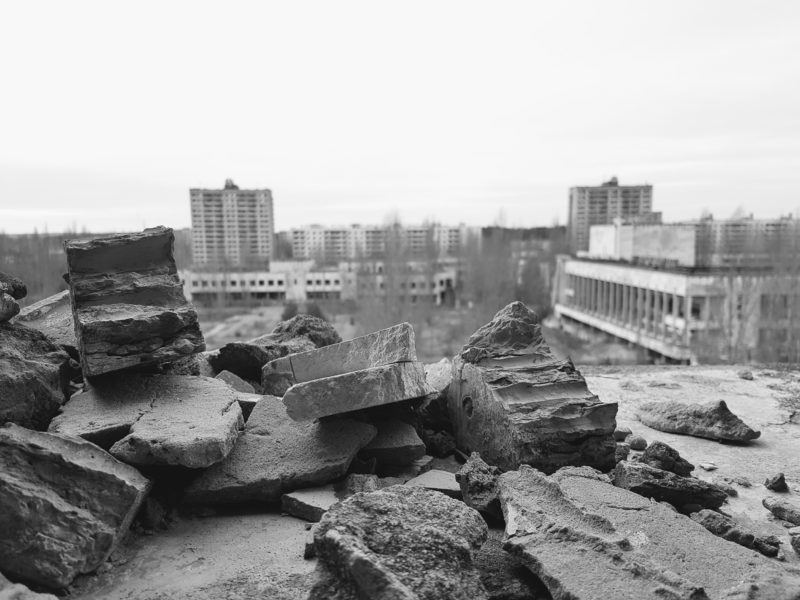
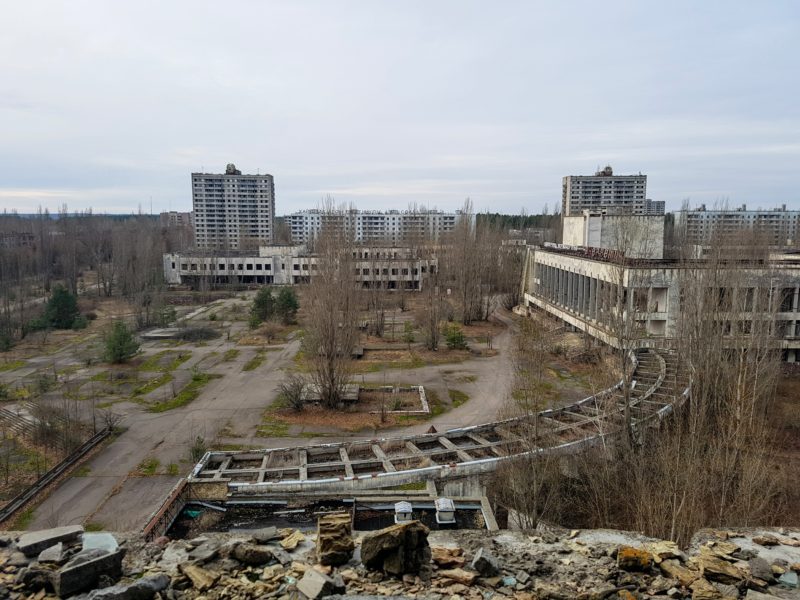
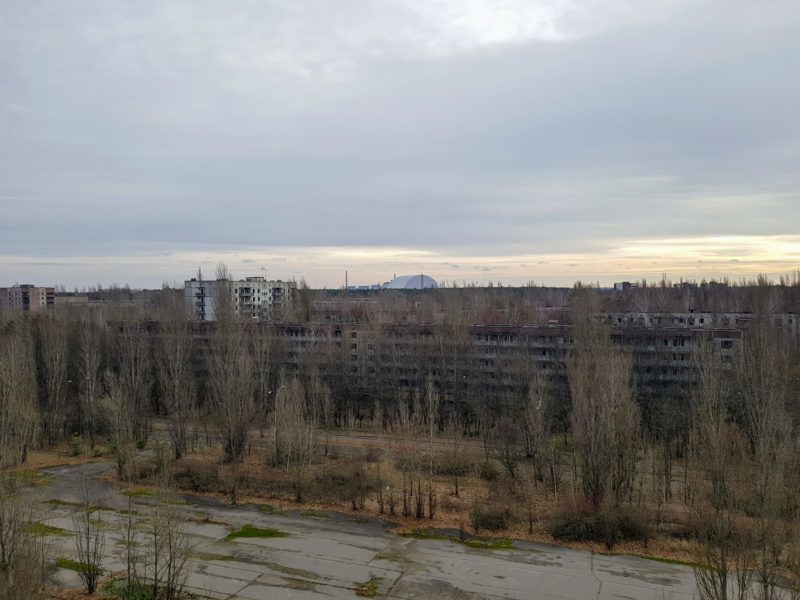
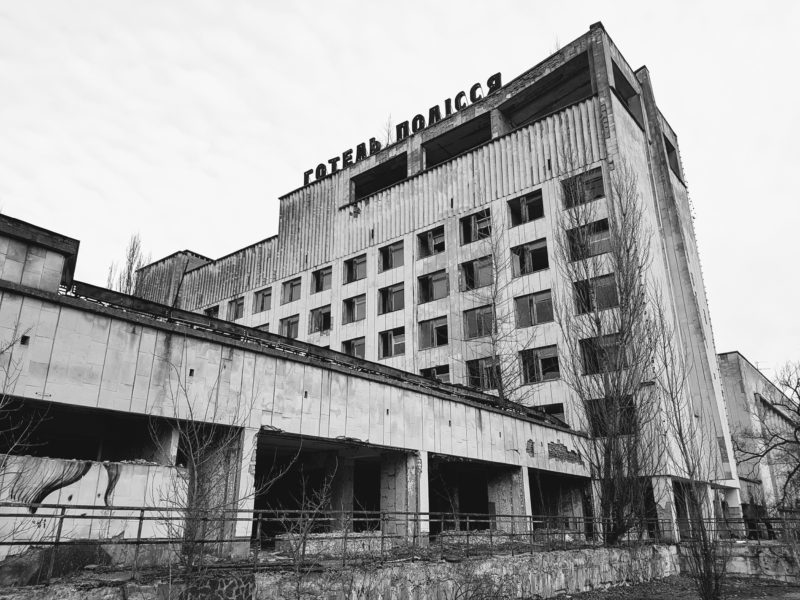
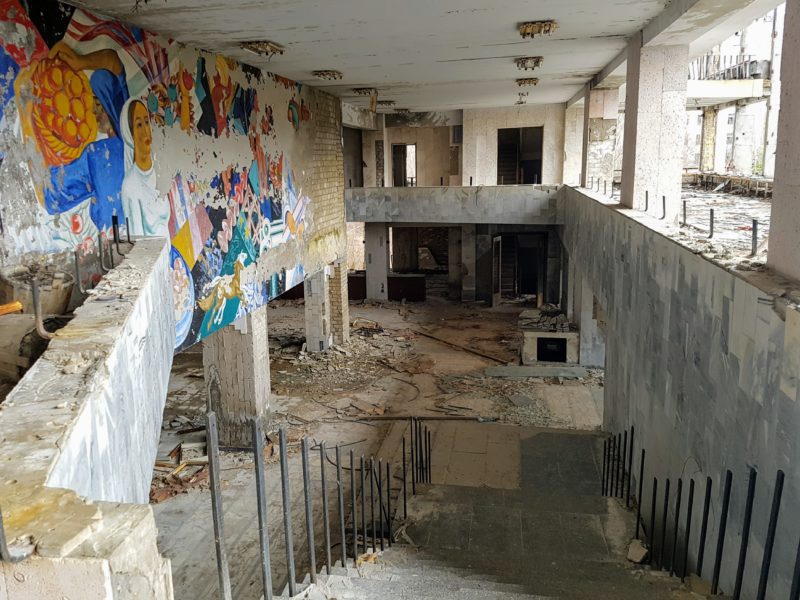
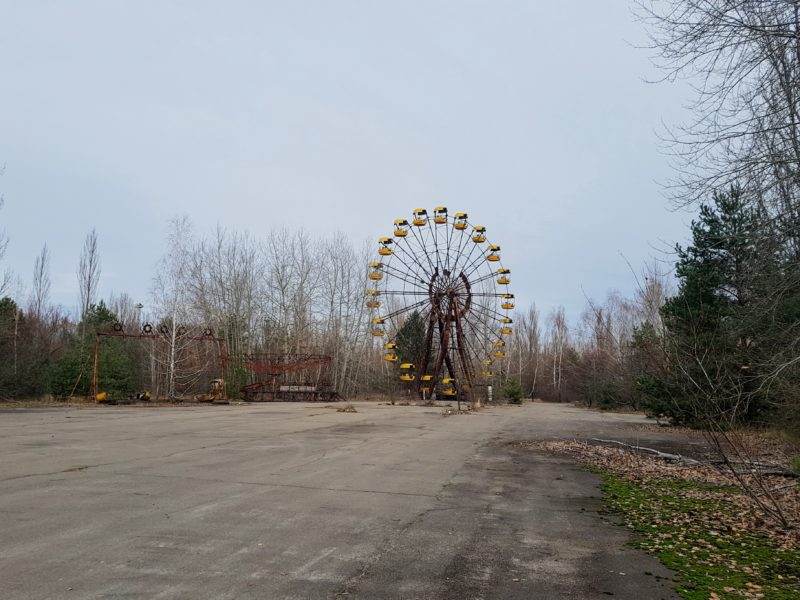
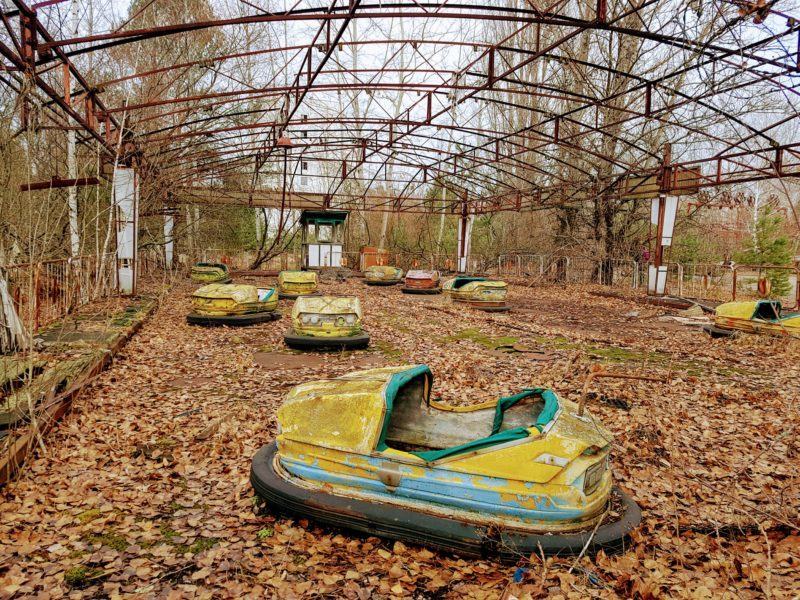
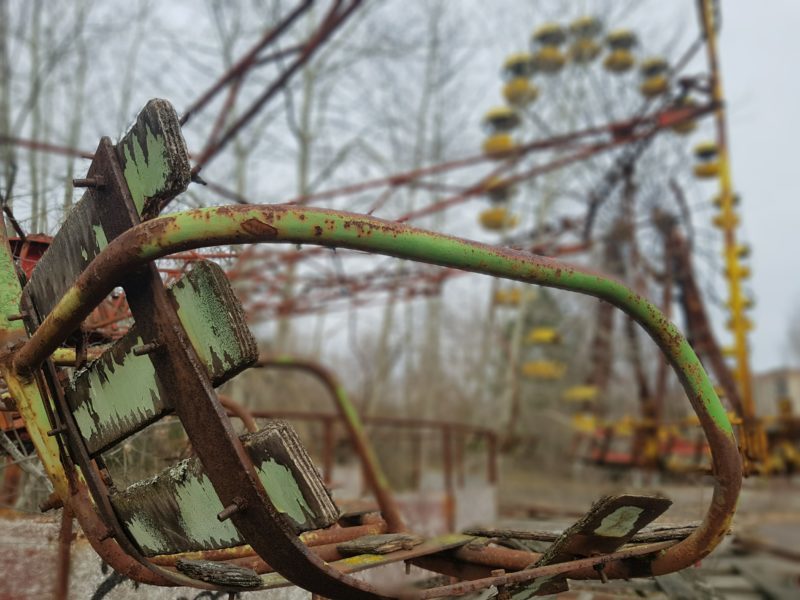
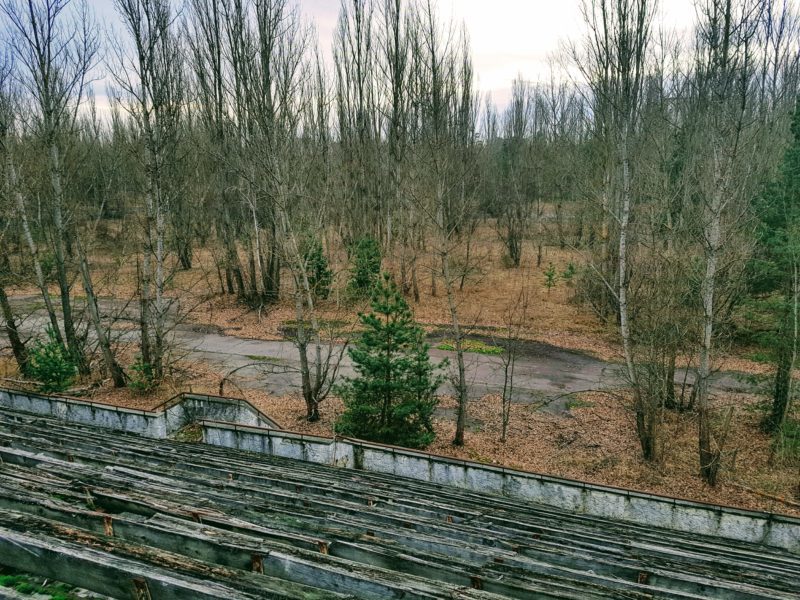
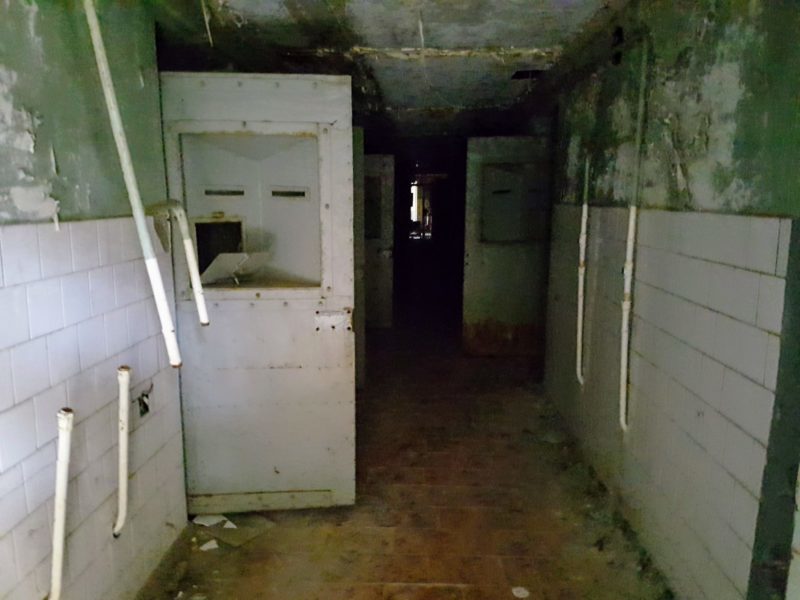
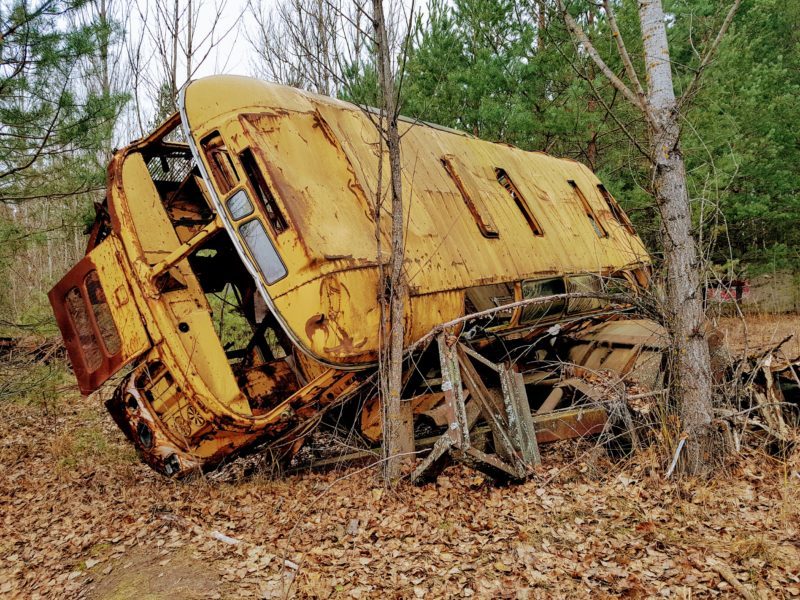
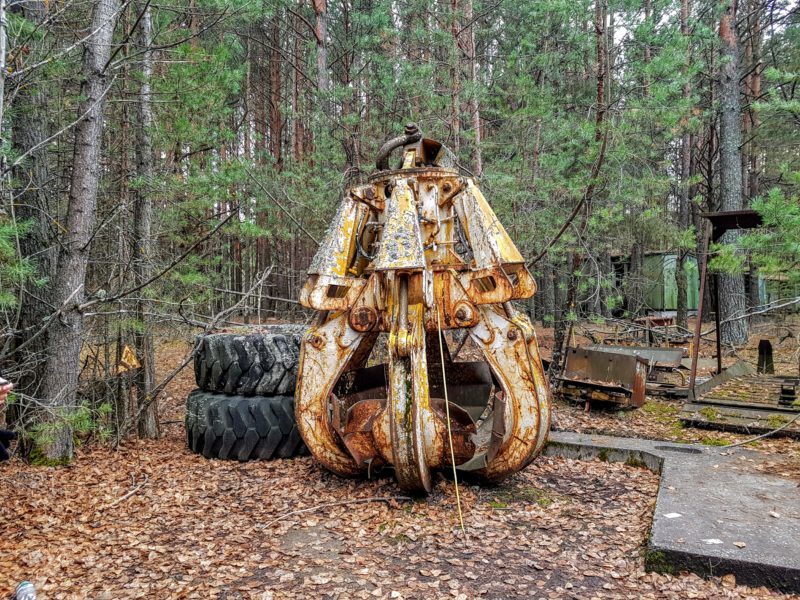
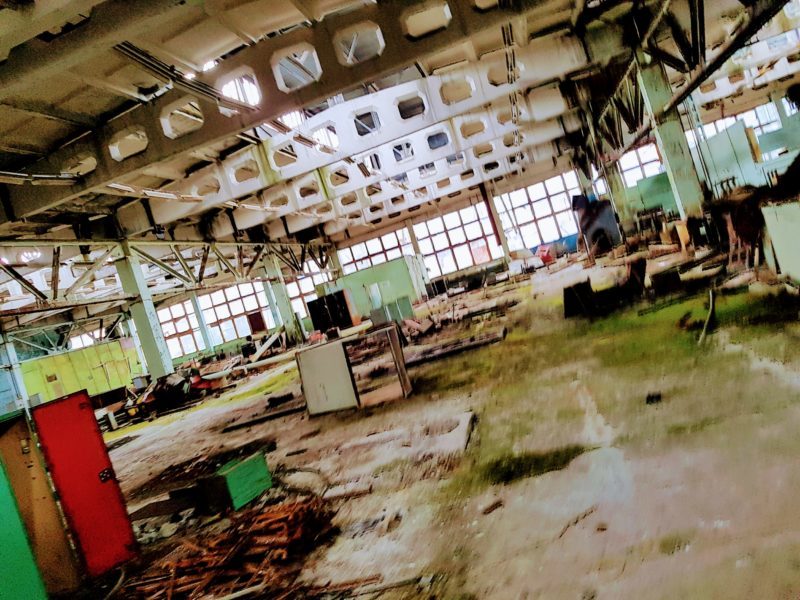
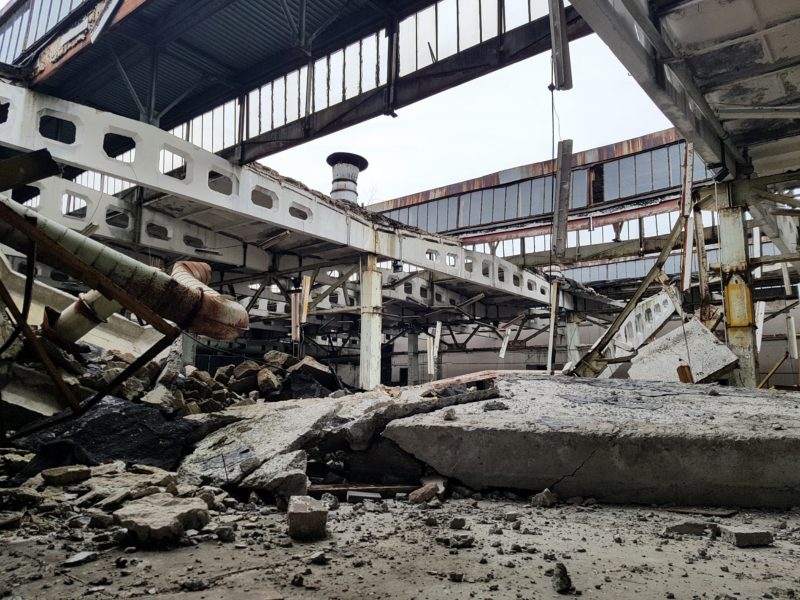
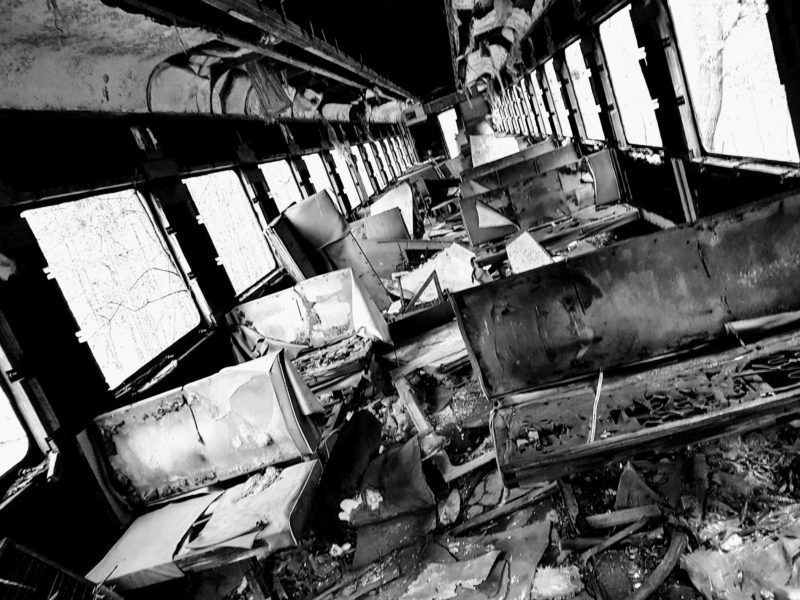
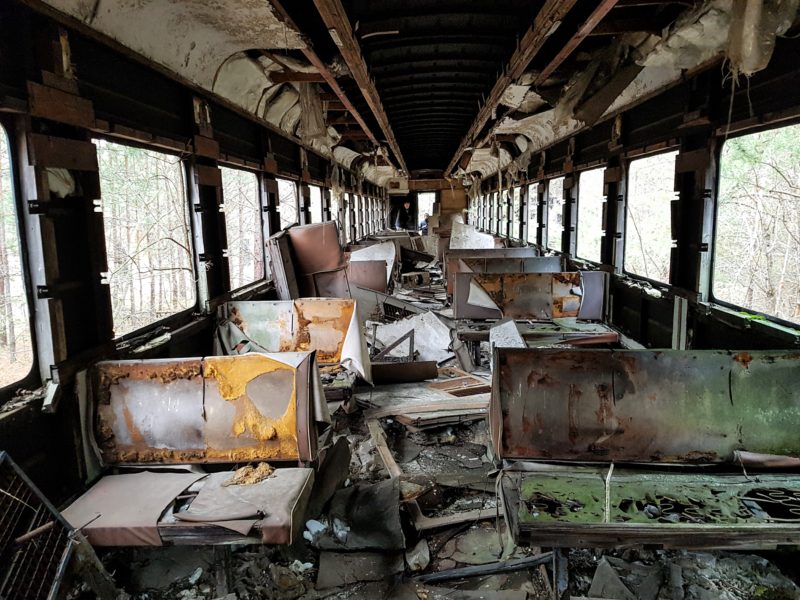
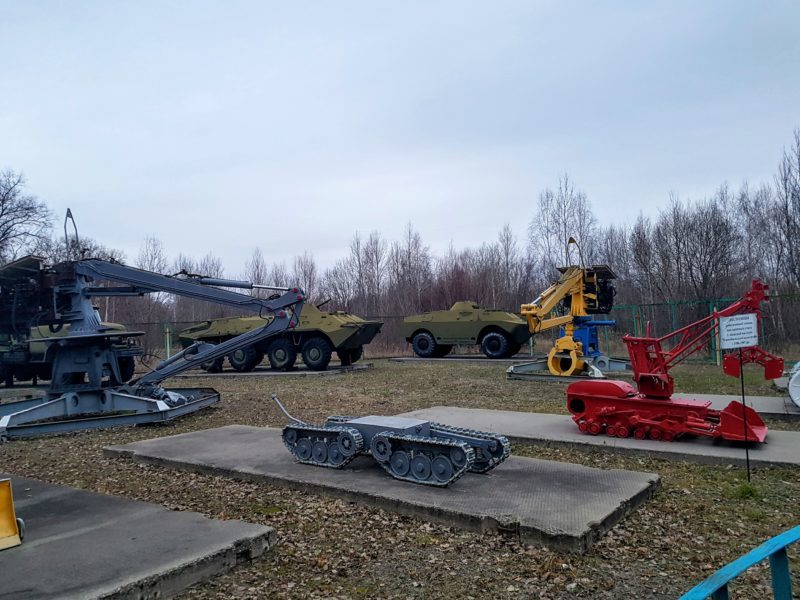
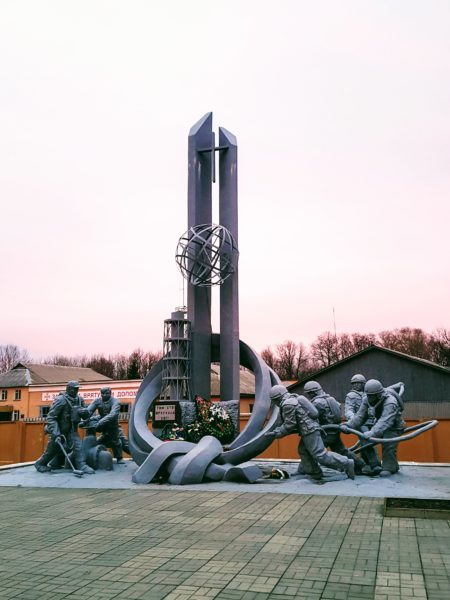
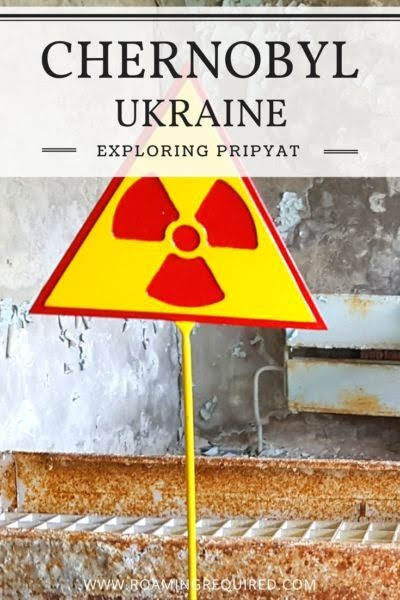
This has been of special interest for me , as I am going to visit Chernobyl in August of this year. There are however certain questions that remain unanswered. Initially I wanted to make a two day visit in order to maximize the number of sites visited. But on numerous occasions I have been warned that entry into any of the buildings is now forbidden ever since the collapse of the school building every other building is deemed to be on the point of a similar collapse.
This apparent ban has been enforced by local roaming Police at the site since 2017. They have the power to end your tour and order your party to return to Kiev.
So is there any point in the Two day visit now days? All exteriors can be observed in just a few hours.
Alas, I find it very misleading when tour companies still show photos of the interiors of the Pool area and the Hospital for example on their promotional sites for their tours. With the two day tour costing as much as four times that of the one day visit, I feel that the “entry into building ban” is the real deal breaker.
Also, what is going to replace the view from the top of the residential building, another walk in the woods or four hours in the souvenir shop?
Whether or not you go for one or two days Gary I think you’ll have an incredible experience. Yes you’re right and I’m aware that the local Police have been cracking down on building entry, they were doing this during our visit too. Some tour operators will disregard the ban and try and get visitors into the buildings but of course you need to make the assessment of risk for yourself with regards to the stability and safety of the buildings because as you say, they are crumbling.
[…] post about exploring the Chernobyl exclusion zone is fascinating and it’s certainly a place we’d love to go visit. Bleak, dystopian, […]
I watched a documentary on this and your images are like a flashback. It’s so hard to believe a prosperous and thriving city has been reduced to ruin like this. I think one day I might visit but I don’t think it will be anytime soon.
Thanks so much for the comment, Kasia 😊 Yeah absolutely agreed, it was just surreal to be walking through a city which was one just the pride of the Soviet Union and today is a reminder of the worst nuclear accident in history.. 😔 A visit is highly recommended
Hi there, who did you use as a guide, I am hoping to go in April and it would be great to go with someone recommended and also be able to sneak into the buildings? Thanks!
Hi Alice, the details regarding our tour operator can be found in the Day 1 post (https://www.roamingrequired.com/chernobyl-exclusion-zone-day-1). As mentioned, access to the buildings is tricky and technically illegal so I think it may depend on the guide and the day you visit.
Wow! This is an incredible review of everything you’ve done, with some spectacular pictures to accompany your words. It’s definitely got my boyfriend and I thinking of a trip out there. Love your site!
Thank you Ioana, really pleased you’re enjoying our site. If you are even remotely curious about visiting Chernobyl, we definitely recommend the experience.
[…] Roma Small of Roaming Required […]
Wow! This post was super interesting and well written! A very nice combination of historical facts and personal experiences. I would definitely want to visit the town on day.
Thanks so much for the kind comment, Sandra. We would definitely recommend making a visit one day, it’s one of those places that definitely leaves a lasting impression.
I remember how long I was debating whether visit it or not, finally, we decided on a one-day excursion. It was very depressing but definitely worth to see. It must have been interesting for you to see more of Pripyat and the exclusion zone during the two days! I like the picture from the high blocks over the city and the train station. We missed those views.
Wow Katalin that’s cool you were able to make it to Chernobyl. When did you go? I agree a 2-day visit is definitely worth the effort. Chernobyl exclusion zone is one of those places you’re unlikely to return to, or who knows, maybe the regulations will change and you won’t be able to visit.